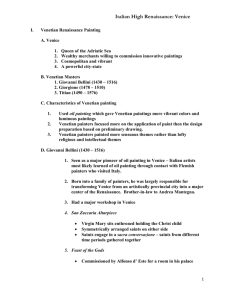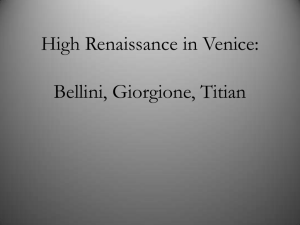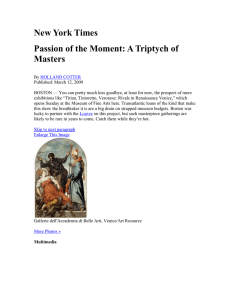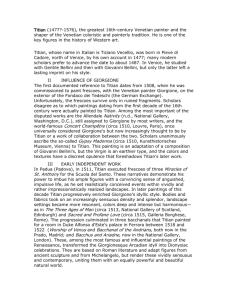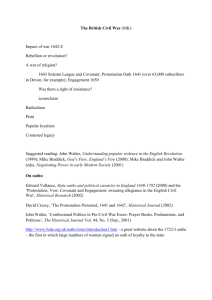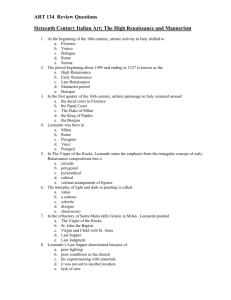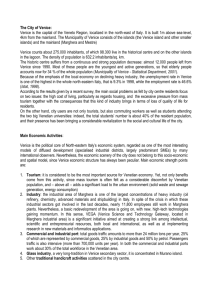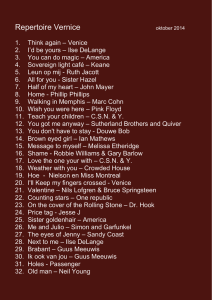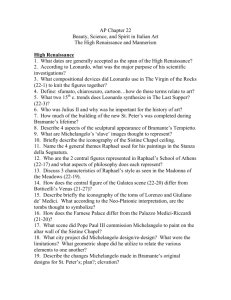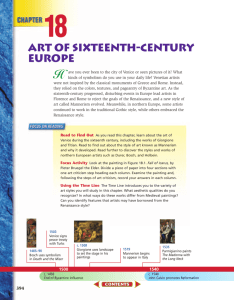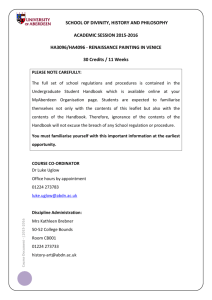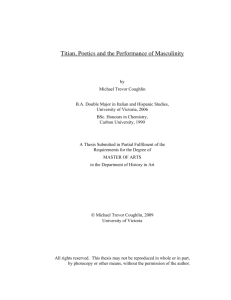Öffentlichkeitsarbeit | Marketing BELLINI, GIORGIONE, TITIAN and
advertisement
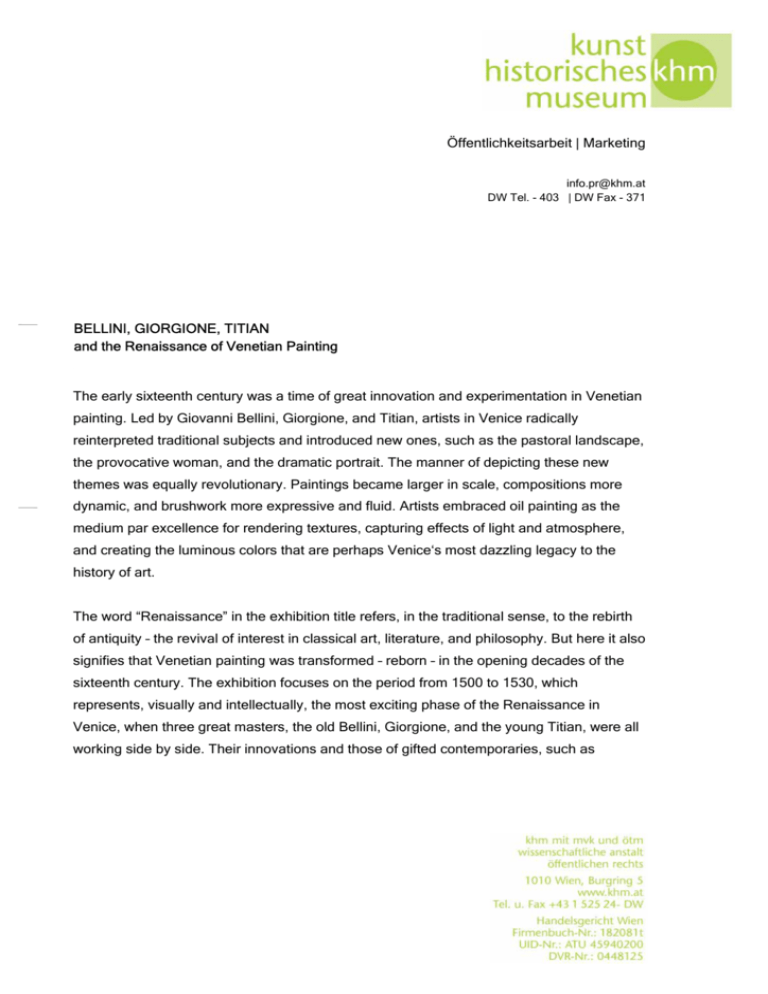
Öffentlichkeitsarbeit | Marketing info.pr@khm.at DW Tel. - 403 | DW Fax - 371 BELLINI, GIORGIONE, TITIAN and the Renaissance of Venetian Painting The early sixteenth century was a time of great innovation and experimentation in Venetian painting. Led by Giovanni Bellini, Giorgione, and Titian, artists in Venice radically reinterpreted traditional subjects and introduced new ones, such as the pastoral landscape, the provocative woman, and the dramatic portrait. The manner of depicting these new themes was equally revolutionary. Paintings became larger in scale, compositions more dynamic, and brushwork more expressive and fluid. Artists embraced oil painting as the medium par excellence for rendering textures, capturing effects of light and atmosphere, and creating the luminous colors that are perhaps Venice‘s most dazzling legacy to the history of art. The word “Renaissance” in the exhibition title refers, in the traditional sense, to the rebirth of antiquity – the revival of interest in classical art, literature, and philosophy. But here it also signifies that Venetian painting was transformed – reborn – in the opening decades of the sixteenth century. The exhibition focuses on the period from 1500 to 1530, which represents, visually and intellectually, the most exciting phase of the Renaissance in Venice, when three great masters, the old Bellini, Giorgione, and the young Titian, were all working side by side. Their innovations and those of gifted contemporaries, such as Sebastiano del Piombo, Palma Vecchio, and Lorenzo Lotto, would influence European art for centuries. HISTORICAL CLIMATE This burst of creativity occurred in a period of crisis. As the century opened, the Most Serene Republic of Venice (La Serenissima) was at war with the Ottoman Turks and lost important Aegean trading outposts to them. Plague repeatedly struck the city, and one virulent outbreak in 1510 probably cut short the life of Giorgione, then in his early thirties. More disastrous was the war that pitted Venice against the League of Cambrai, an alliance formed by the papacy, its Italian allies, and the Holy Roman Emperor to halt Venetian expansion on the mainland. Venice’s humiliating defeat in a crucial battle of 1509 nearly extinguished the republic. Recovery was slow, but the war effectively ended when Venetian troops marched victoriously into Verona in 1517. That the arts flourished amidst this chaos was largely due to the wealth the city had accumulated in the previous century, its prosperous trade with northern Europe, and its stable republican government. SACRED IMAGES AND STORIES Despite the Renaissance interest in secular themes of classical inspiration, images of saints and scenes from the life of Christ continued to dominate Venetian painting, as they had for centuries. Venetian artists approached these traditional subjects in novel ways. Most devotional pictures of saints had previously been vertical in format to focus the viewer‘s attention on the holy figures that largely filled the frame. Bellini adopted instead a horizontal format, as in his “Virgin with the Blessing Child”, permitting a panoramic view of the landscape behind the Madonna and Child. Bellini, whose artistic career had begun in the 1460s, was the point of departure for the younger generation of Venetian artists. The high demand for his altarpieces and small half-length Madonnas required him in maintain a large workshop of assistants, which Giorgio Vasari described in his “Lives of the Artists” (1568) as the training ground for Giorgione, Sebastiano del Piombo, and Titian. Bellini‘s followers continued his innovations and introduced their own. The keen interest in nature seen in his works is carried further in Giorgione’s “Adoration of the Shepherds”. By placing the figures in one side, Giorgione made room for an unprecedented, expansive view of nature, whose beauty and serenity harmonize with the emotional tenor of the figures surrounding the infant Christ. Titian also experimented with asymmetrical compositions, lending them a new dynamism, as in his “Virgin and Child with Saints Catherine and Dominic”. Unlike Bellini’s hieratic, blessing child, Titian‘s holy infant twists away from his mother to gaze at Catherine, while Dominic and the unidentified donor of the painting ardently press forward in their spiritual longing for nearness to Christ. Such pictures of saints from different eras (Catherine was martyred in the fourth century and Dominic died in 1221) joined in contemplation of the Virgin and Child are known as “sacre conversazioni” (holy conversations) and had long been a staple of Italian painting. In Venice, Titian’s reinterpretation of the theme, with figures in fervent poses interacting with one another, was entirely new. PICTURES OF WOMEN Relatively few portraits of actual women survive from Renaissance Venice. More common are poetic images of provocative young women such as Giorgione’s “Laura”. This barebreasted figure framed by laurel branches inspired a series of similar beauties, culminating in Titian’s “Flora”. Their sensuality, free-flowing hair, and semi-undress must have surprised viewers accustomed to seeing women portrayed, if at all, as respectable matrons. Titian‘s letters indicate that his models were sometimes women of easy virtue, who were not difficult to find in Venice, then famous throughout Europe for its many beautiful and charming courtesans. The origins of the eroticized half-length portrait are intertwined with amorous descriptions of beloved women found in both classical and contemporary love poetry being published in Venice at this time. Without the constraints of naturalistic portraiture, artists freely invented imaginary beauties. Some have attributes associating them with ancient heroines or goddesses, while others are pure embodiments of the poetic ideal of the perfect woman. ALLEGORIES AND MYTHOLOGIES The rediscovery of classical texts in the Renaissance opened up a vast range of new subjects for artists to explore. By 1500, Venice was a major center of the printing industry, and the publication of writings from antiquity led patrons to commission works of art derived from ancient philosophy, history, and literature. The section of Plato’s “Republic” that discusses the education of philosophers possibly inspired Giorgione’s enigmatic “Three Philosophers”, in which the figures may represent the three ages of man. The youngest, seated philosopher contemplates the dark, cavernous cliff face; the mature philosopher regards our world; and the oldest, perhaps blind philosopher seems to look inward. In an earlier phase of the painting, visible with x-rays, the old philosopher wore an exotic headdress whose shape suggests rays of sunlight. Although variously interpreted, the “Three Philosophers” may derive from the Platonic allegory of the mind‘s ascent from the shadowy darkness of ignorance, symbolized by a cave, into the bright light of knowledge, symbolized by the sun. The subject would have appealed to the owner of the work, Taddeo Contarini, who read ancient philosophy and was one of the most erudite patrons in Renaissance Venice. The revival of classical bucolic poetry, of the sort known from Virgil’s Eclogues, gave rise to a quintessentially Venetian type of painting: the idyllic, pastoral landscape. Titian’s “Pastoral Concert” epitomizes this genre, with its gently rolling hills bathed in sunlight. Inspired by a pastoral poem from antiquity or the Renaissance, the painting is evidently an allegory on the creation of poetry. The women seem invisible to the poetic, musical young men and are perhaps their muses. The contrast between the rustic, barefoot shepherd and fashionable, urban tute player points to the dialectic between city and country, cultured and rustic, art and nature, that lies at the heart of the pastoral idiom. Mythological gods and godesses, beautiful nymphs, and naughty satyrs populate the pastoral landscapes painted by Bellini and Titian for a room in Duke Alfonso d’Este’s palace in Ferrara. Bellini completed his “Feast of the Gods” for this room in 1514, and several years after his death in 1516, the duke commissioned Titian to paint the “Bacchanal of the Andrians”. Inspired by an ancient description of a lost painting, Titian portrayed the happily drunken denizens of the island of Andros, where a river of wine flows perpetually. Later, Titian reworked the “Feast of the Gods”, painting the hillside at left, among other changes, to make Bellini’s composition harmonize with his own. The contrast between the reclining nymphs at the far right of both works suggests that Titian was also trying to outdo Bellini, his former master, in the depiction of female beauty. Such artistic rivalry probably contributed to the rapid development of Venetian painting in this period. PORTRAITS OF MEN Giorgione and his circle evolved a revolutionary type of dramatic male portrait, in which patrician young men are shown acting the part of a lover, poet, musician, or gallant soldier. Previously, Venetian portraits had emphasized the sitter’s social and economic station in life. The Giorgionesque portrait reveals instead the sitter‘s private self, often touched with melancholy and a sense of yearning. The softly shaded style and the dreamy demeanor of the young man depicted in Palma Vecchio’s “Portrait of a Poet” typify this approach. Venetian painters’ interest in conveying an individual‘s state of mind was likely inspired by Leonardo da Vinci, who visited Venice in 1500 and may have brought with him drawings demonstrating his new language of pose, gesture, and expression. Leonardo‘s influence may be detected in Sebastiano del Piombo’s “Man in Armor”, in which the soldier’s menacing glance and jutting shoulder forcefully convey his potentially aggressive mental state. Sebastiano’s virtuoso handling of oil paint to depict metallic sheen demonstrates that he was also familiar with the work of Jan van Eyck and his followers. Flemish paintings were prized by collectors in Venice, where they were widely available as a result of the city‘s trade with northern Europe. Of all the Venetian portraitists, none had more lasting influence than Titian, who experimented with the Giorgionesque type of poetic portraiture but invested its mood of reverie with greater realism. The youth depicted in his “Man with a Glove” seems simultaneously real and ideal. Though his identity is unknown, he possibly belonged to the court of Federico Gonzaga in Mantua, whose most illustrious member, the author and diplomat Baldassare Castiglione, visited Titian’s studio in Venice in 1523. In his book “Il Cartegiano”, Castiglione described the perfect courtier as one who possessed nobility and grace, impressed others with his talent, and, above all, avoided affectation so as to appear natural. According to Castiglione, dress should “always tend more toward the grave and sober rather than the foppish. Hence, I think that black is more pleasing in clothing than any other color.” In its restraint, naturalism, and understated elegance, the “Man with a Glove” epitomized the new courtly ideal of dress and deportment. As such, it set a standard for portraiture that would be emulated by European artists for centuries.
